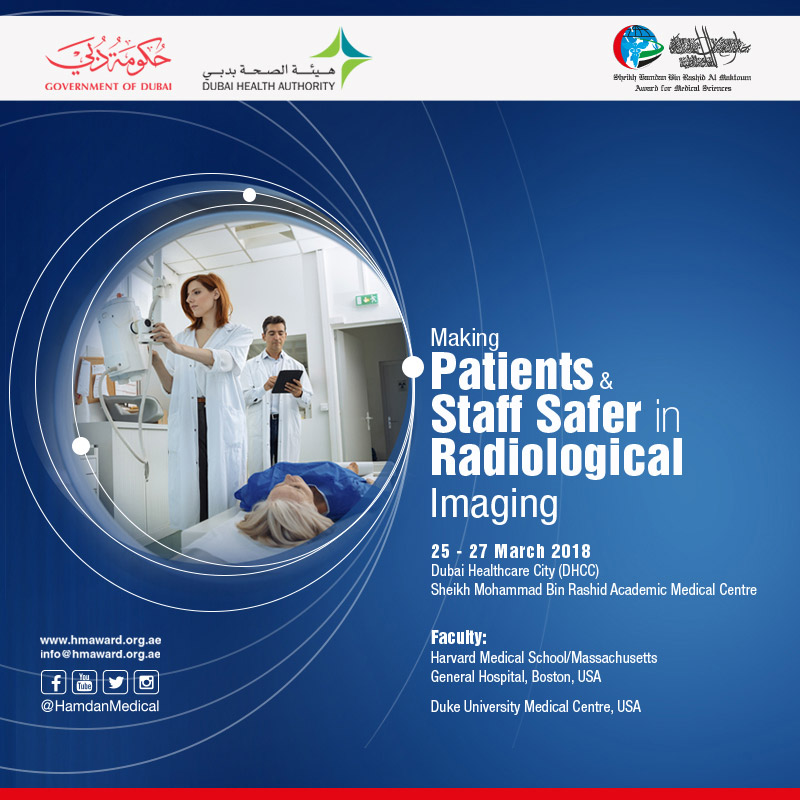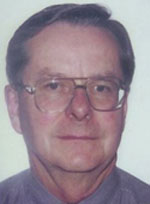Professor Murray Esler
International Awards
Hamdan Award for Medical Research Excellence
- Pathogenesis of Hypertension
2005-2006
Prof. Murray Esler is a cardiologist and medical scientist born in 1943 in Geelong city in Australia. Since 1977 his appointment has been to the Alfred Hospital, Melbourne, Australia and the Baker Heart Research Institute (currently Associate Director and Head of the cardiovascular Neuroscience Division).
Prof. Esler's research and clinical interests are: causes and treatment of high blood pressure and heart failure; the human sympathetic nervous system; stress, and its effects on the heart and blood pressure; neurotransmitters of the human brain.
Over the past 27 years Professor Murray Esler has investigated cardiovascular neuroscience with flair and distinction. The initial task to which he applied himself was the development of radiotracer techniques for the neurochemical study of sympathetic nervous system function in humans, establishing total and regional norepinephrine "spillover" measurement methodology. These methods were then broadly applied in areas of clinical pathophysiology and medicine, leading to important discoveries in the fields of high blood pressure, human stress and heart failure.
Professor Esler and his colleagues demonstrated that in human mental stress responses the sympathetic nerves of the heart are preferentially highly activated, and that this can have adverse effects, sometimes leading to myocardial infarction and sudden death. This work helped to establish the now accepted concept that heart disease can be "psychogenic".
In patients with heart failure, an innovative series of research projects by Professor Eslerdemonstrated that the cardiac sympathetic nerves were stimulated at a very high level. An earlier, almost universally held view was that the failing heart was functionally and anatomically sympathetically denervated. A prospective study in severe heart failure, conducted with his colleague Dr. David Kaye, demonstrated that the level of cardiac sympathetic tone in heart failure patients was the strongest predictor of death. This research program provided crucial evidence underpinning the introduction of beta-adrenergic blocking drugs in heart failure.
He and his colleagues have demonstrated that sympathetic nervous system activation in some cases has environmental origins, being a mediating mechanism by which adverse lifestyle causes hypertension (specifically with chronic stress, lack of physical exercise and overweight).
Esler's group demonstrated that obesity-related hypertension is characterized by activation of the sympathetic outflow to the kidneys, which is thought to be the pivotal mode of blood pressure elevation in the obese. The demonstration that high sympathetic nervous activity in essential hypertension was directly linked to activation of brainstem noradrenergic neurons projecting to the hypothalamus suggested an importance for mental stress and behaviouralmechanisms in the blood pressure elevation of essential hypertension.
With his colleagues, he has very recently demonstrated an epigenetic abnormality involving the noradrenergic transporter of sympathetic nerves, which magnifies the increase in sympathetic nerve traffic commonly underlying essential hypertension. He had first described the phenotype of faulty neuronal reuptake of noradrenaline in essential hypertension in 1981. His group in
2005 demonstrated that this phenotype resulted from silencing of the noradrenaline transporter gene by an epigenetic mechanism, hypermethylation of the gene promoter region.
This broad body of pioneering research has direct application to the prevention of hypertension, and to both its non-pharmacological and pharmaceutical treatment. Weight loss and aerobic exercise training, the two principal forms of non-pharmacological therapy for high blood pressure, both importantly act through inhibition of the sympathetic nervous system. It seems certain that drug therapy specifically targeting the sympathetic nervous system is currently underutilized in clinical hypertension care. Based on the demonstration by Professor Eslerand others that obesity-related hypertension (of which there is a world-wide "epidemic") is neurogenic, a newer class of centrally acting sympathetic suppressant drugs, imidazoline binding agents, is now being specifically used in this variant of essential hypertension.
Prof. Esler has membership in several professional Societies, Colleges and Committees, such as Fellow of Royal Australasian College of Physicians; Member of the Cardiac Society of Australia; Chairman Fellowships Committee National Heart Foundation of Australia, 1992-96; Member of the International Society of Hypertension; Executive Member of the High Blood Pressure Research Council of Australia 1996-1998; Member, Scientific Advisory Board of The Mental Health Research Institute of Victoria 1991-96; Member, Scientific Advisory Committee of the National Health and Medical Research Council of Australia Schizophrenia Research Unit 1991-96; Member of Fellowships Committee of National Health and Medical Research Council of Australia 1997-99.
He has won several awards prominent among them are Susman Prize, Royal Australasian College of Physicians (1983), awarded annually for "the best original contribution to internal medicine by a Fellow or Member of the Royal Australasian College of Physicians"; Wellcome(Australia) Medal (1989), awarded annually for "the most outstanding biomedical research in Australia"; RT Hall Prize (1996), for research in cardiology, awarded annually by the Cardiac Society of Australasia; Ramaciotti Medal (1 997), for excellence in biomedical research.
Merck Sharpe &Dohme Award of the International Society of Hypertension (2000); Monash University Vice-Chancellor's Award for Postgraduate Student Supervision (2000); Elected a
Fellow of the Australian Academy of Science (2002); Hartnett Medal of the Royal Society of the Arts (2002); Centenary Medal (2003).
Prof. Esler has made his valuable services on Editorial Boards of Clinical Autonomic Research; Clinical Science; Hypertension; Journal of Hypertension; Blood Pressure etc, being the more important among them. He is the author of 300 medical papers on several topics.
Prof. Murray Esler introduced his new concepts and measurements of regional noradenalineuptake and spillover in various organs. This for the first time allowed the identification of the differential sympathetic outflow to different organs in various types of hypertension. Thus 'neurogenic hypertension' such as in hypertension associated with obesity, can now be characterized in individual patients. This extensive work of Professor Esler has had a great impact on our present understanding of hypertensive diseases.
Therefore Professor Murray Esler is truly worthy being awarded for his outstanding contributions as an innovator in Pathogenesis of Hypertension, the Hamdan Award for Medical Research Excellence, for the session 2005-2006.

